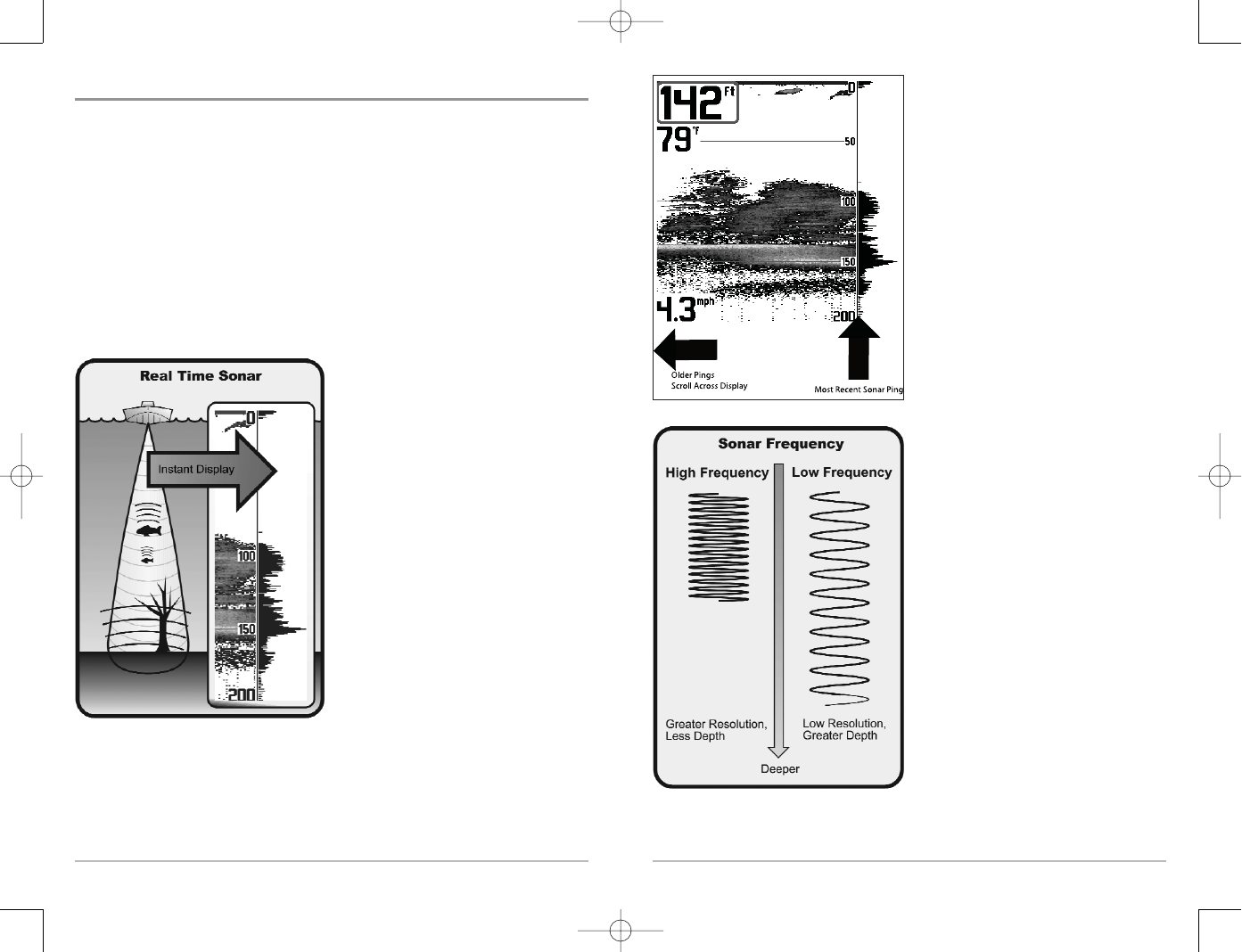
2
How Sonar Works
Sonar technology is based on sound waves. The 300 Series™ Fishing System uses
sonar to locate and define structure, bottom contour and composition, as well as
depth directly below the transducer.
Your 300 Series™ Fishing System sends a sound wave signal and determines
distance by measuring the time between the transmission of the sound wave and
when the sound wave is reflected off of an object; it then uses the reflected signal
to interpret location, size, and composition of an object.
Sonar is very fast. A sound wave can travel from the surface to a depth of 240 ft
(70 m) and back again in less than 1/4 of a second. It is unlikely that your boat can
"outrun" this sonar signal.
SONAR is an acronym for SOund and
NAvigation Ranging. Sonar utilizes
precision sound pulses or "pings" which
are emitted into the water in a teardrop-
shaped beam.
The sound pulses "echo" back from
objects in the water such as the bottom,
fish and other submerged objects. The
returned echoes are displayed on the LCD
screen. Each time a new echo is received,
the old echoes are moved across the LCD,
creating a scrolling effect.
1
When all the echoes are viewed side by
side, an easy to interpret "graph" of the
bottom, fish and structure appears.
The sound pulses are transmitted at
various frequencies depending on the
application. Very high frequencies (455
kHz) are used for greatest definition but
the operating depth is limited. High
frequencies (200 kHz) are commonly
used on consumer sonar and provide
a good balance between depth
performance and resolution. Low
frequencies (83 kHz) are typically used to
achieve greater depth capability.
531444-1_A - 323_Man_English.qxd 11/5/2005 12:33 PM Page 6


















